Cross trainers and ellipticals have many of the same benefits and disadvantages, but also several distinct differences, here is a breakdown of all things to know; cross trainer vs elliptical!
What is a cross trainer?
A cross trainer also called an elliptical trainer, is a stationary piece of exercise equipment that simulates walking, running, and stair climbing, all while engaging the arms and upper body as well.

It is an upright machine with pedals, handlebars, and no saddle, and resembles an exercise bike.
They are notable for their low impact but effective workouts that limit stress and strain on the joints, making them suitable for the vast majority of people to use.
What is an elliptical?
While the cross trainer is another type of elliptical, a traditional one has regular stationary bars that can be gripped onto, since, unlike the cross trainer, these do not move, so the majority of workout benefits are located in the lower body.
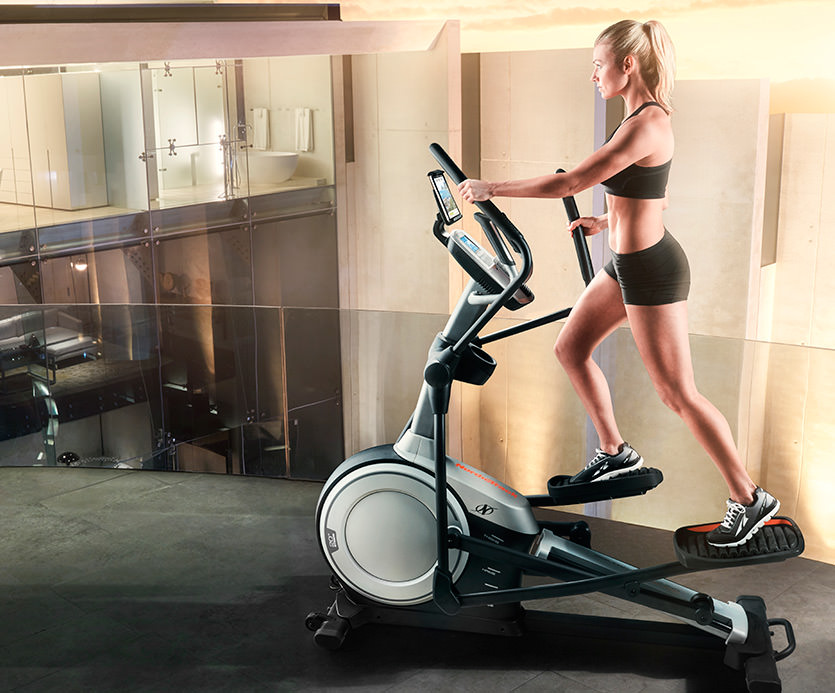
Regular ellipticals also are low impact and safe for people of all ages to use, making them a common and popular choice of fitness gear for many.
What are the differences between cross trainers vs ellipticals?
As mentioned above, cross trainers have moving handlebars and a different shape than traditional ellipticals, and some cross trainers have wheels, allowing them to be easily moved to place to place if a change of scenery is desired.
Recumbent cross trainers also exist and are made for the user to sit on while exercising, in a not so dissimilar way to a spin bike, making them a great choice for those with trouble standing, as well as for people with more advanced joint issues.
The moving handlebars of the cross trainer allow the user to get more of a full-body workout as well because pushing and pulling the bars enables the core, arms, and upper body to get in on the action.
These additions and changes to traditional ellipticals enable the cross trainer to have more flexibility in uses and burn more calories than regular ellipticals because of more muscles being engaged during workout sessions.
However, the stationary handlebars can also be a benefit for those with joint issues in the upper body that may get strained by using the moving options, so this is a matter of choosing what might work best for you based on your circumstances and the type of workout that you desire.
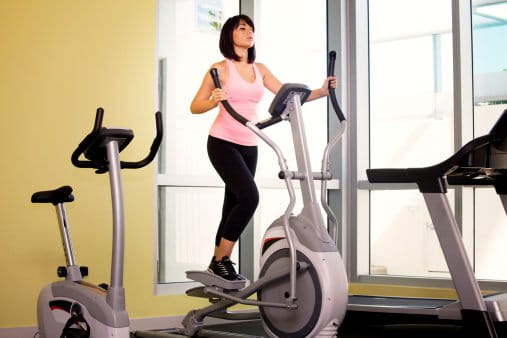
Older individuals or those with balance-related problems may find the basic elliptical with its static handlebars for support easier and safer to use and grip onto, and someone younger and more fit may prefer the moving handlebars to get a more intense workout and improve balance.
Cross trainers also lack the adjustable incline for the leg pedals which is a common element of the traditional ellipticals, so if that type of variance in your workout is preferred, the latter might be a more suitable purchase.
However, many cross trainers are equipped with dual motion capabilities, such as being able to pedal forwards and backward on the machine, which works different muscle groups and enables variance in the workout to limit the staleness which can come from repeated sessions.
How much do cross trainers and ellipticals cost?
Miniature ellipticals that work just the lower legs are an option for those with little space in their homes, and for consumers on a tighter budget, these devices are often called “Under desk ellipticals” or “miniature ellipticals”, and they are on the cheaper side at about 200 to 500 dollars or so.

Standard size ellipticals often range anywhere from 600 to 2,000 dollars, depending on what features are added or built into the machine, along with the materials.
Cross trainers generally range from 600 to 1,500 dollars, depending on factors such as the above-mentioned features and specifications, but as a whole, many tend to be cheaper than standard ellipticals.
Head to head, cross trainer vs elliptical: benefits
Below is a general summary of how cross trainer vs elliptical stack up between each other, in short.
- Both low impact and easy to use machines, although the elliptical can be easier to use and safer for those with upper body joint issues.
- More muscle groups can be worked on with the moving handlebars of the cross trainer, and the heart rate is increased faster with this addition, making it a better choice for those who wish to train their stamina and heighten their calorie burn.
- Both machines are considered weight-bearing exercises, so they’re a perfect choice for people with osteoporosis or arthritis who need to incorporate exercise regimens that strengthen their bones.
- In general, a cross trainer is a better fit for those who are looking for a more complete workout for their entire body, while the traditional elliptical is better suited for those who are looking for something low impact that works mainly their lower body’s muscles.
What are the cons of both ellipticals and cross trainers?
- Both ellipticals and their cousins, the cross trainer, generally share similar pros and cons, such as not being the best fit for those with preexisting knee problems, since, even with being low impact, the way your weight is distributed on the machines can aggravate existing injuries or joint issues in the knees.
- Both machines may be versatile, but no gym equipment is perfect or can do absolutely everything, and the same is true for ellipticals and cross trainers because, if for example, you want to better condition yourself for a sport that involves running or jogging, a treadmill is a better choice for those circumstances, as they target the right muscles for the job.
- While both have folding options, they can take up a decent amount of floor space and may not be the best suited for apartments or small homes like other more space-saving equipment, however, folding options exist and might make storage easier in some cases.
- Ellipticals and cross trainers may be great for getting fit, burning calories, and enhancing stamina, but they’re not going to make you pack on muscle like other more intensive exercises, so if muscle building is your goal, the elliptical isn’t the right tool, unfortunately.
Other Notes and Wrapping Up
There are several varieties of elliptical and cross trainer, each has their own advantages and disadvantages, so it’s best to examine each of them and keep in mind what you wish to gain from your machine, as this will help you make a purchase of one that’s right for you.
Types and their specs
Rear-drive elliptical
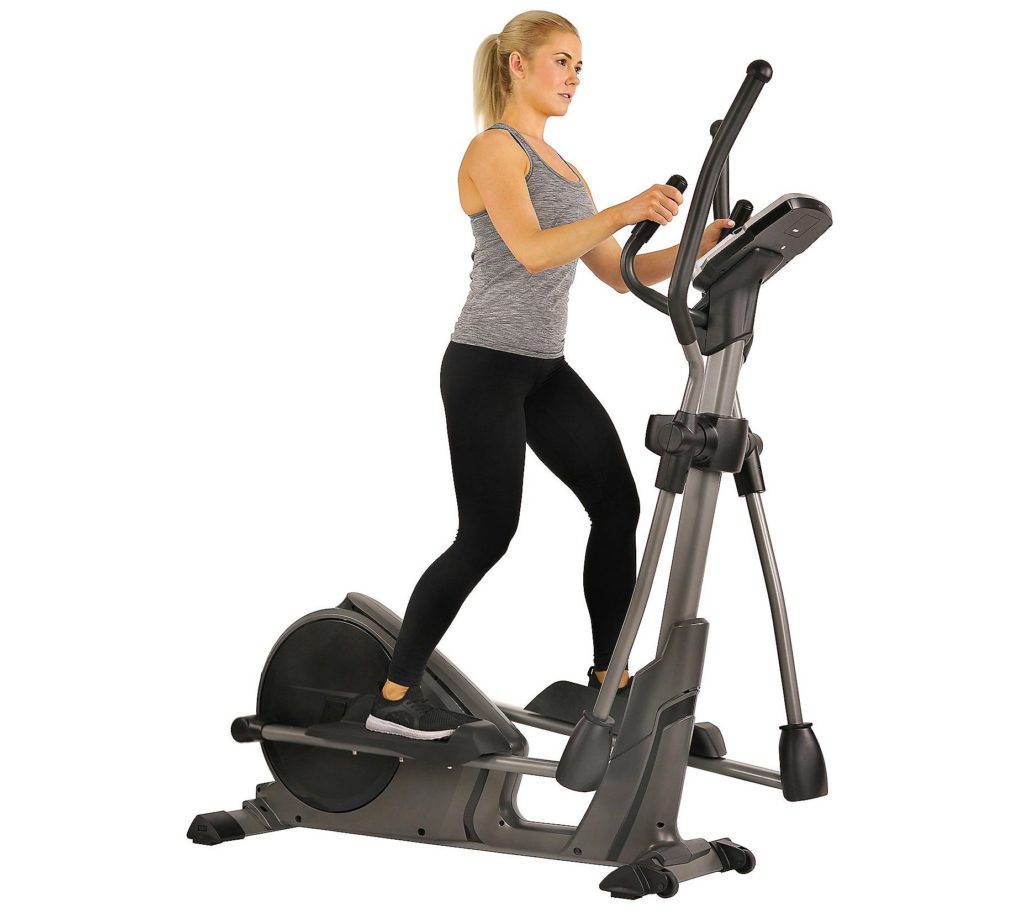
The rear-drive variety is one of the older designs, but is still popular and holds up even today in many public and home gyms and garages.
This type is notable for its flywheel situated at the back of the machine, which makes the motion less erratic and gives the user a more smooth and natural gait while using it.
Front-drive elliptical
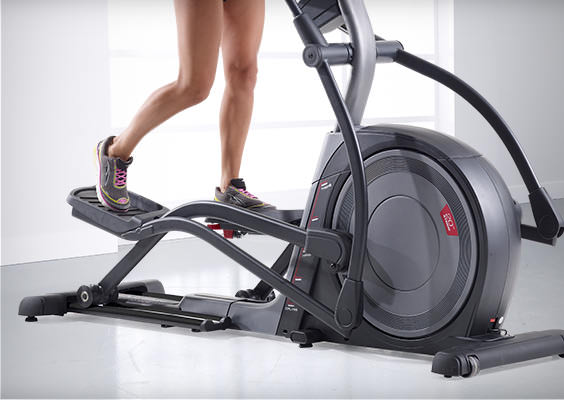
This kind if distinguished by its flywheel located at the front of the elliptical, with the roller tracks sitting in the back of the machine and the pedals gliding along these tracks.
Front-drive ellipticals may be preferable to those who have difficulty with using the full range of motion in their legs, due to them sitting lower to the ground than rear-drive machines.
Miniature Elliptical
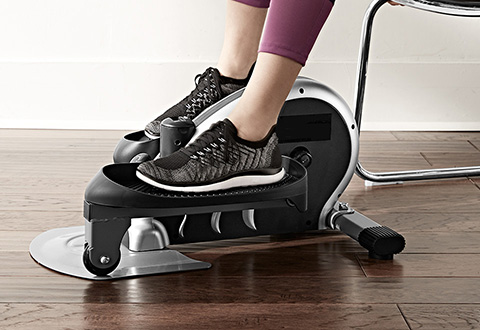
These compact machines are often referred to as under-desk ellipticals due to their small size and being able to fit underneath the majority of desks in homes and offices.
They may not provide a full-body workout like what is typical of the elliptical, but they’re great for stress relief and getting in some extra exercise, and many studies have found increased memory and productivity benefits when office workers have access to machine such as these!
Center Drive Elliptical
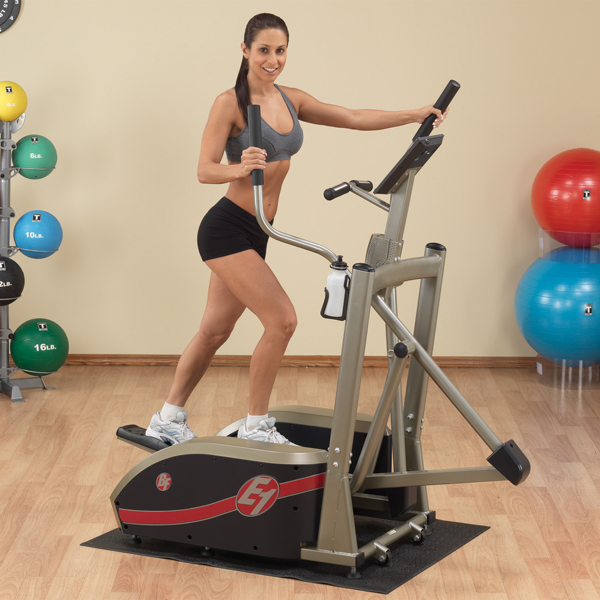
This type offers a more vertical motion due to its flywheel being located on either side of the pedals, essentially creating a movement similar to a stair-climbing machine.
Center drives tend to be more compact and upright, making them easier to store or use in small homes and apartments.
Elliptical Glider

Gliders are much smaller and more compact than the other models, sometimes called air gliders, they work in the same pedaling fashion as the other ellipticals, but have no flywheel and have the user walking without a set track or platform, just the pedals themselves.
Cross Trainer
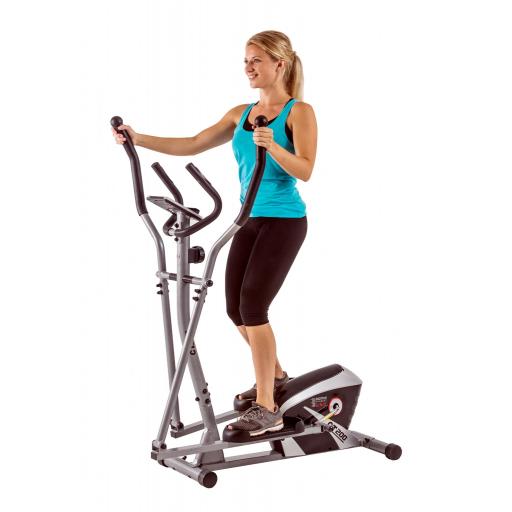
As mentioned at the start, the cross trainer is very similar to a stationary bicycle and often has a seat, especially in the case of the recumbent cross trainer, allowing the user to recline and relax while getting their workout session done.
They provide great full body and cardiovascular workouts.
Traditional Elliptical

The original tried and true version, the standard elliptical can have a flywheel in any position, and generally focuses on working out the muscles of the lower body, as it tends to have fixed handlebars for the user to hold, rather than moving ones.
A perfect machine for those in need of a lower intensity and low impact workout.
Wrapping up!
In general, regardless of the type or variety, both ellipticals and cross trainers are highly effective, safe, and low impact exercise machines that provide great cardiovascular workouts, especially to those who struggle to fit in their exercise in other ways as a result of injuries or joint issues and mobility problems.
I hope this article was informative and offered food for thought on what you may wish to consider when deciding to purchase a cross trainer vs elliptical as your next piece of gym equipment!
Best wishes, and thank you for reading!
